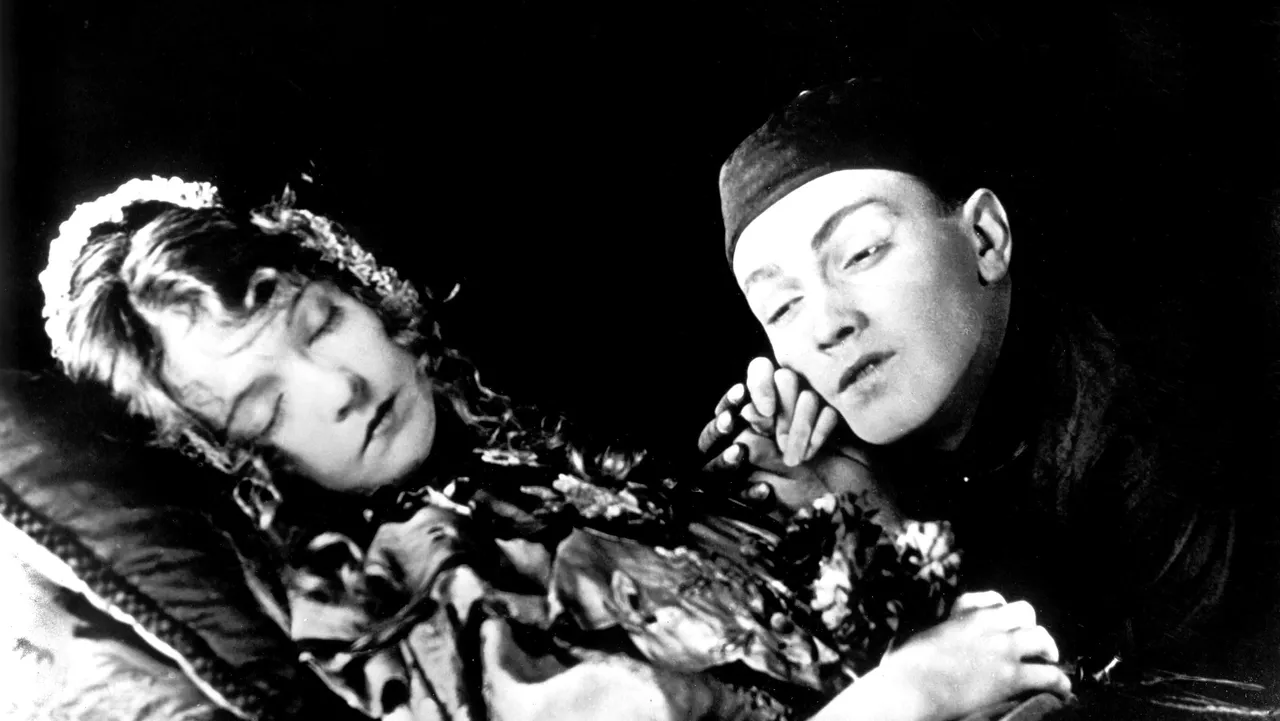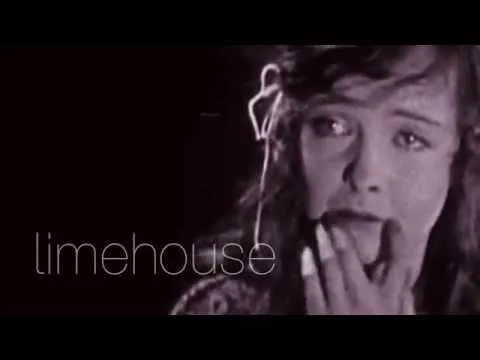
In 1915 D. W. Griffith earned his place in history by directing The Birth of a Nation, groundbreaking epic that revealed new possibilities offered by still young medium of film, but also brought accusations of racism that would remain to this day. Griffith never renounced his work, but he nevertheless tried to answer his critics, most famously with his next epic Intolerance in which he preached peaceful coexistence between different people. Later, consciously or unconsciously, he went even further by directing a film that was as anti-racist as it was possible in his time. That was Broken Blossom, 1919 melodrama which is considered one of his finest works and another classic of the silent era.
The film is based on “The Chink and the Child”, story by English author Thomas Burke, originally published in his 1916 collection Limehouse Nights. The plot begins in one of treaty ports in China where the protagonist Cheng Huan (or “Yellow Man” as described in inter titles, played by Richard Barthelemess) decides to travel to “Anglo-Saxon lands” to bring the word of Buddha to their peoples. Few years later he finds himself in Limehouse, impoverished district of East End of London where he runs small shop. Another inhabitant of the district is Battling Burrows (played by Donald Crisp), professional boxer who happens to like drinking and womanising but also has extremely bad temper and uses every opportunity to physically abuse his unwanted daughter Lucy (played by Lillian Gish). One day, after experiencing such brutal abuse, she stumbles in Cheng Huan’s shop. Cheng Huan gives her shelter, nurses her back to health and gives her kindness she has never experienced in life. Although he isn’t indifferent to her delicate beauty, their relationship remains platonic, but Lucy’s happiness is destined to be short-lived. Her violent father learns about Lucy living with “the Chink” and this results in tragedy.
Broken Blossoms might be insulting to some of today’s viewers for the simple fact of Chinese protagonist being played by white actor Richard Barthelmess, resulting in an effect not that different from blackface used in The Birth of a Nation. However, in context of his time Griffith was actually going against prevalent racist sentiments. The plot deals with concept of love between characters belonging to different races, which was still a felony in criminal codes of many US states at the time; that, among other things, explains why Griffith had the plot set in Britain. Furthermore, Griffith also went against “Yellow Peril” stereotypes by altering Burke’s original story and transforming Cheng Huan from ordinary drifter who likes to smoke opium and visit brothels into a Buddhist missionary, a character that could easily be described as saintly. Griffith also used this film, made while First World War was still going on, as another opportunity to express his pacifist views ; character of policeman dealing with a single murder makes semi-ironic comment about news reports about tens of thousands of people being killed on battlefield.
This film is also quite different from Griffith’s best known works in terms of scale. Unlike epics with thousands extras and sets depicting long-gone exotic worlds, Broken Blossoms looks almost like a chamber piece with its banal everyday setting of London’s East End. Griffith, on the other hand, uses this opportunity to focus on the plot and characters. The acting is top notch, although Barthelmess looks a little bit too melodramatic at times. Donald Crisp, who would later build great career as character actor in Classic Hollywood, excels as brutal villain and even does good job in boxing scene. But the real treasure of this film is Lilian Gish, young actress who, thanks to years of collaboration with Griffith, became one of Hollywood’s first stars. Role of Lucy, a textbook example of ingenue, was perfect for Gish and in it she gave one of the strongest and most intense performances of her career. Griffith also worked very hard with his cinematographer G. W. Bitzer to create new filming techniques that would be later associated with “soft light”; here they work well to enhance the delicate beauty of Lillian Gish.
Broken Blossoms was originally made for Famous Players Lasky, studio that would later become known as Paramount. Its head Adolph Zukor didn’t like it and Griffith instead bought the film and later distributed it through his own studio United Artists. Broken Blossoms was well-received by critics but, even more importantly, the audience, turning it into major hit and confirming Griffith as one of the most influential and successful film makers of his time. In 1936 eponymous sound remake, starring Dolly Haas and Emlyn Williams, was produced in Britain.
RATING: 7/10 (+++)
Blog in Croatian https://draxblog.com
Blog in English https://draxreview.wordpress.com/
Leofinance blog @drax.leo
Cent profile https://beta.cent.co/@drax
Minds profile https://www.minds.com/drax_rp_nc
Uptrennd profile https://www.uptrennd.com/user/MTYzNA
Unstoppable Domains: https://unstoppabledomains.com/?ref=3fc23fc42c1b417
Hiveonboard: https://hiveonboard.com?ref=drax
Bitcoin Lightning HIVE donations: https://v4v.app/v1/lnurlp/qrcode/drax
Rising Star game: https://www.risingstargame.com?referrer=drax
1Inch: https://1inch.exchange/#/r/0x83823d8CCB74F828148258BB4457642124b1328e
BTC donations: 1EWxiMiP6iiG9rger3NuUSd6HByaxQWafG
ETH donations: 0xB305F144323b99e6f8b1d66f5D7DE78B498C32A7

